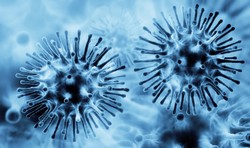Novel targets for anti-influenza drugs
Traditionally, influenza epidemics are treated with anti-viral drugs and vaccines. However, the influenza virus is inherently capable of mutating its genome as an immune evasion strategy. This antigenic drift limits the efficacy of existing vaccines as they can confer immunity only against specific viral strains. To provide new targets for anti-influenza drug development, the EU-funded INFLUENZA BUDDING project investigated the assembly and budding of influenza viruses. The work focused on the structure and function of the virus integral matrix protein M2 in virus budding. Researchers investigated the molecular mechanisms by which the M2 causes membrane scission, thereby enabling the release of viral particles outside the host cell. The team performed mutagenesis experiments and tested the function of generated mutants through a variety of viral and protein assays including in vitro budding experiments. Results showed that haemagglutinin (HA), neuraminidase (NA) and the matrix M2 and M1 proteins are central for viral structure. Specifically, M2 and HA interact with specific lipid domains whilst the NA transmembrane domain is a key determinant for the initiation of virus assembly and budding. Biophysical analysis of the M2 cytoplasmic tail indicated a specialised localisation of the M2 helix central for virus budding. This clearly underscored the importance of the M2 amphipathic nature in virus assembly and budding. Furthermore, the results of the study suggested that there may be other proteins containing amphipathic helices that function in various cellular budding processes including clathrin-independent endocytosis and multi-vesicular body budding. Collectively, the findings of the INFLUENZA BUDDING study significantly advance the field of virology and help portray an unprecedented picture of the influenza virus budding process. Importantly, they point towards key protein to protein and protein to lipid interactions that could be exploited for antiviral therapeutic development. Future drug screening efforts are expected to identify novel anti-influenza compounds that can help combat the serious health impact of influenza.







